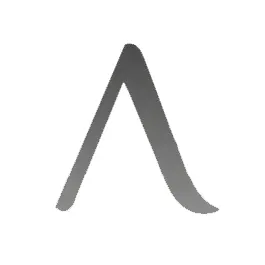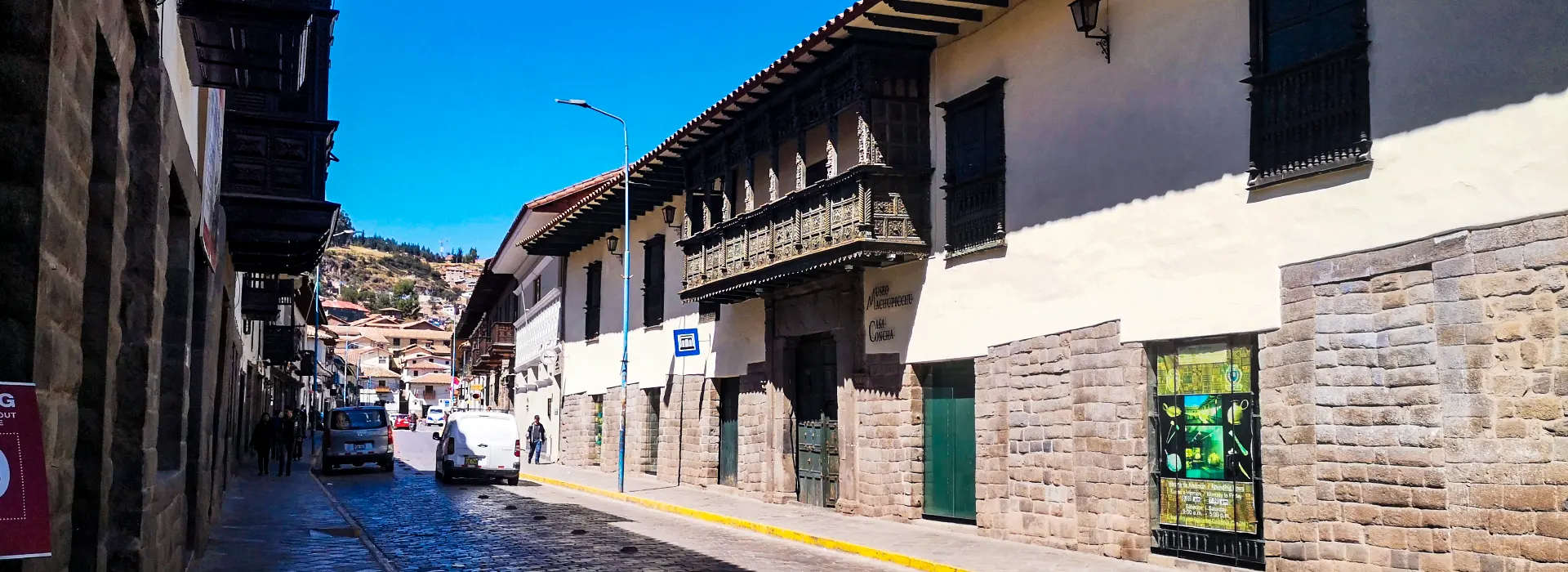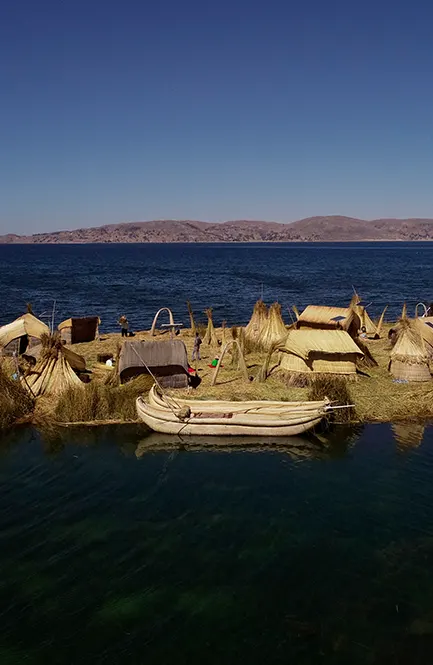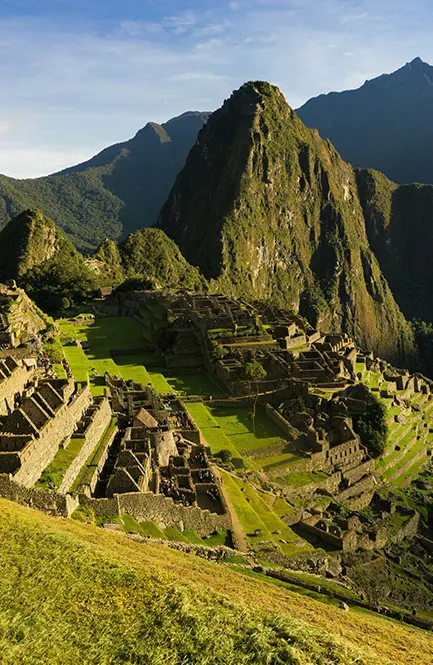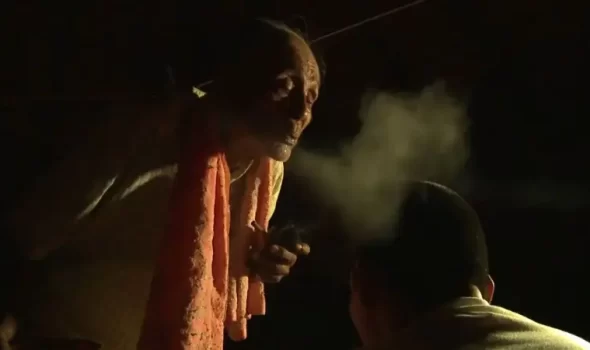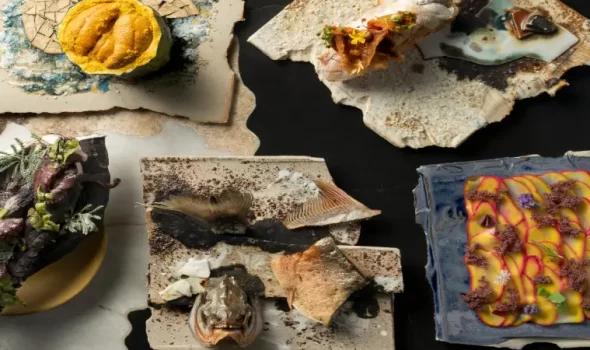1.- What is Casa Concha Museum?
Casa Concha Museum in Cusco, Peru is a fascinating place that offers a glimpse into the history and culture of the Inca civilization. The museum is located in a colonial residence that was built on the bases of the palace of Tupac Yupanqui Inca, the son and successor of the famous Inca Pachacutec, who was the builder of Machu Picchu.
The Casa Concha Museum is home to an exceptional collection of Inca artifacts recovered from Machu Picchu. These artifacts include pottery, jewelry, tools, and other items that provide insight into Inca civilization and culture. Visitors can also learn about the history of Machu Picchu and its importance to the Inca Empire.
In addition to its collection of Inca artifacts, the Casa Concha Museum is also a beautiful example of Andean residential architecture during the early years of the Spanish conquest. The house has a total area of 2,373 m2 and was built in 1710. It has murals, baroque-style balconies, wood carvings, platforms, pools, and a series of rooms (up to 16) that are open to the public.
If you’re interested in learning about Inca culture and history, the Casa Concha Museum is definitely worth a visit. It provides an invaluable educational opportunity for visitors to explore and learn about Inca civilization and culture.
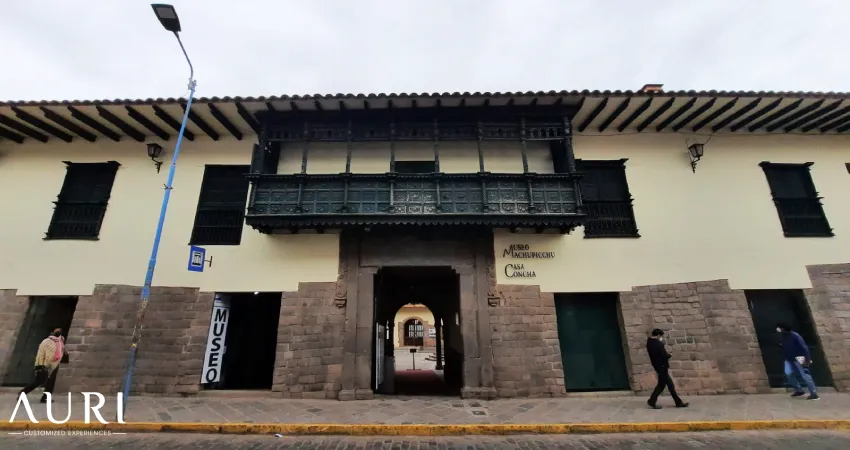
Casa Concha museum in Cusco
2.- Where is Casa Concha Museum?
The museum is located on Calle Santa Catalina Ancha 320, close to Cusco’s Plaza de Armas. This central location makes it one of the most popular attractions in the city, and it’s easy to see why. The Casa Concha Museum offers an exceptional collection of Inca artifacts that provide insight into Inca civilization and culture. Visitors can learn about the history of Machu Picchu and its importance to the Inca Empire, as well as explore the beautiful colonial residence that houses the museum.
Whether you’re a history buff or simply interested in learning more about Inca culture, the Casa Concha Museum is definitely worth a visit.
In order to contact the Casa Concha museum, please use the following methods:
-
The number is (084) 255535.
-
Send an e-mail to museocasaconcha@unsaac.edu.pe
3.- Brief history of Casa Concha, the house of José Santiago Concha y Salvatierra
The Casa Concha Museum is housed in a colonial residence that was built on the foundations of the Inca Túpac Yupanqui’s palace, also known as ‘Puka Marka.’ This architectural wonder is a fusion of baroque colonial design and indigenous elements, making it a unique and fascinating destination for visitors interested in history and culture.
One of the most remarkable features of the Casa Concha Museum is its monolithic main door, which is adorned with intricate carvings that showcase the skill and craftsmanship of the indigenous people who built it. The seven-bay balcony is another impressive feature of the house, providing a stunning view of the surrounding area. The spacious patio, adorned with arches, is a peaceful and serene space where visitors can relax and take in the beauty of their surroundings.
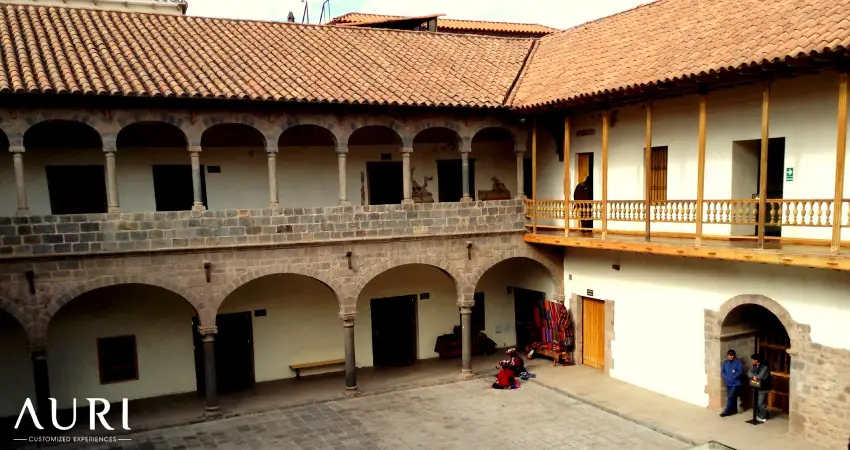
Inside Casa Concha Museum
The Casa Concha Museum is a historic house that underwent meticulous restoration efforts to open its doors to the public in 2011. The restoration project aimed to preserve the original structure and features of the house while making it accessible to visitors. The result is a beautiful and well-preserved museum that provides an invaluable educational opportunity for visitors to learn about Inca culture and history.
4.- The Fascinating Odyssey of the Lost Artifacts of Machu Picchu
In 1911, the ambitious young explorer Hiram Bingham embarked on a daring expedition to the rugged highlands of the Peruvian Andes, determined to fulfill the quest of his life: to find the legendary lost citadel of the Incas.
Armed only with ancient chronicles and the fiery enthusiasm of youth, Bingham navigated steep trails and forged through dense jungle, hoping to discover traces of the elusive sanctuary. When a native boy led him to the majestic ruins of Machu Picchu, shrouded in vines and mist, Bingham knew he had made a monumental discovery.
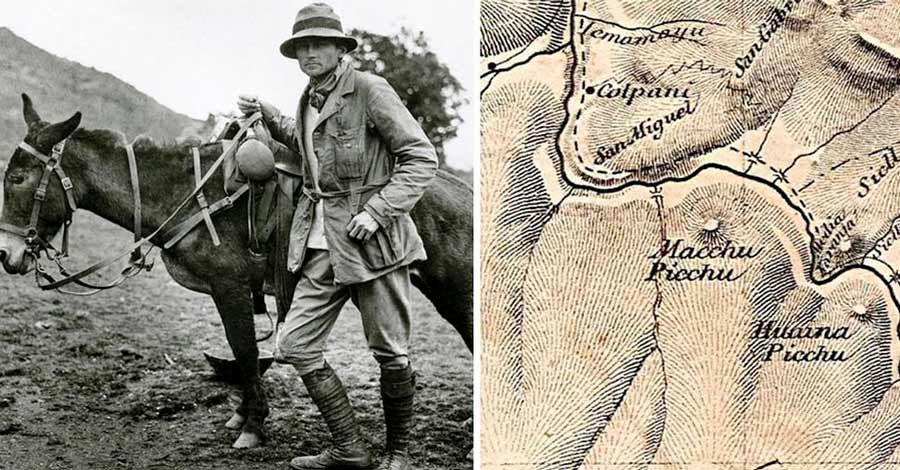
Hiram Bingham on his expedition to Machu Picchu
Astonished by the stone palaces still standing among the mountains, Bingham excavated the site between 1912 and 1915, unearthing thousands of ancient relics. With special permission from the President of Peru, he sent over 5,000 artifacts to Yale, ranging from gold ornaments to household utensils.
Machu Picchu became an international sensation when Bingham published his findings. Yet, while he was hailed as a hero, Peru yearned for its ancestral treasures to return home. In vain, Peru requested their repatriation in 1920. Yale refused, and the artifacts remained concealed in their vaults.
Nearly a century later, in 2001, the University finally brought them to light in a traveling exhibition across the United States. Peru’s wounded pride ignited. Following a challenging decade of negotiations and legal battles, Yale finally agreed in 2010 to return the collection to its place of origin.
It was between 2010 and 2012 that the lost relics of Machu Picchu returned to Cusco in an emotional journey. As Yale’s permanent exhibition had been designed for American audiences, their presence was still felt upon their reception at the Casa Concha Museum. The treasure of the Andes had finally returned home, and its long-lost secrets were about to be revelaed.
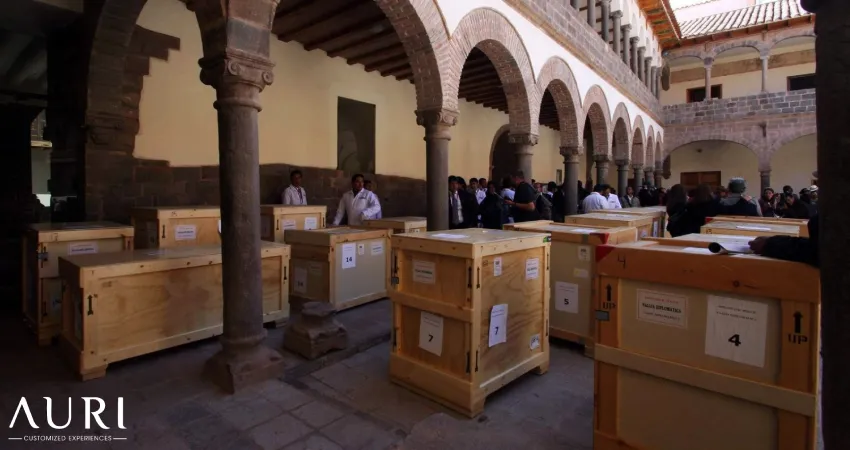
Installation of the exhibition of Machu Picchu artifacts in Cusco in 2011
The artifacts were welcomed with great joy and excitement by the local people. They celebrated the return of the lost relics with traditional dances and music. The artifacts remain preserved in the museum to this day, a reminder of the rich history and culture of the Inca Empire.
5.- How are the Artifacts at Casa Concha Museum?
Enter the realm of Casa Concha Museum’s permanent exhibition and unveil an awe-inspiring array of over 360 meticulously curated artifacts that offer an immersive journey through history. This captivating collection spans a diverse spectrum of treasures, encompassing ceramic masterpieces, lithic wonders, ornate tumis (traditional knives), intricate ribbons, delicate tweezers, reflective mirrors, exquisite aríbalos, and a remarkable assortment of construction tools.
Anticipate the discovery of three distinctive collections, each ready to share its unique insights:
Hiram Bingham Collection
Immerse yourself in the vivid world of the American explorer Hiram Bingham through a carefully curated assemblage. Feast your eyes on an array of colored photographs that vividly capture Bingham’s iconic 1911 expedition to Machu Picchu, inviting you to relive the awe-inspiring moments of his journey.
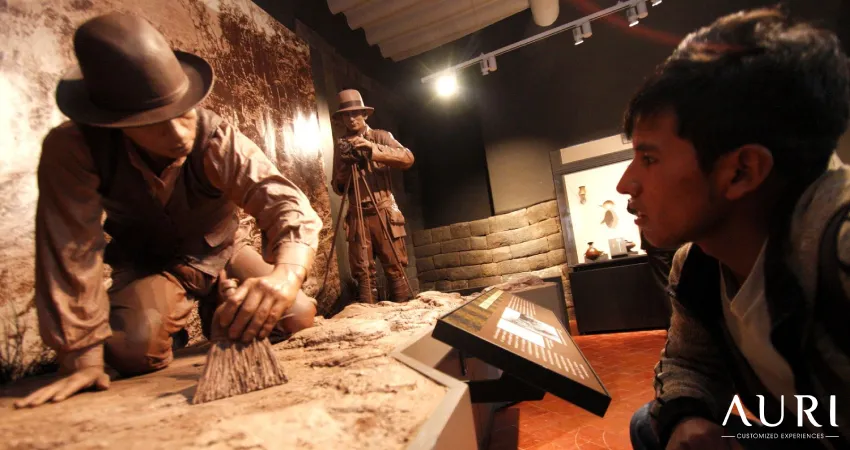
Hiram Bingham tribute at Casa Concha museum
Marvel at the didactic models that unveil the intricate excavation process carried out at Machu Picchu, providing you with an insightful glimpse into the meticulous efforts behind the unveiling of this archaeological treasure. Engage with interactive videos that further unravel the mysteries of the past, offering a virtual window into the bygone eras that grace the annals of history.
However, the crown jewel of the Hiram Bingham Collection lies in the myriad ceramic, lithic, and metal artifacts that grace its chambers. Among these treasured relics, the famed ‘tumi’ knife takes center stage, evoking a sense of wonder at the craftsmanship of a bygone era. The exhibition doesn’t shy away from its dedication to holistic representation; it also houses bone remains that provide a tangible connection to the lives lived within the ancient walls (revealing details about a male individual aged between 23 and 25 years).
6.- UNSAAC Collection
Casa Concha Museum extends its embrace to encompass the contributions of the National University San Antonio Abad of Cusco (UNSAAC), enriching its repertoire with artifacts sourced from the depths of history. This collection boasts a compelling assortment of objects discovered within Casa Concha, the illustrious palace of the Inca Túpac Yupanqui.
7.- Casa Concha Collection
Step into an exhibition that transcends the boundaries of time, immersing you in the opulent architecture and profound riches that characterize the very house that now cradles the museum. The Casa Concha Collection offers a mesmerizing journey through history, spotlighting the stunning collection of colonial-era paintings that adorn its walls, as well as sculptures and emblematic pieces that evoke the opulence of the Viceroyalty period.
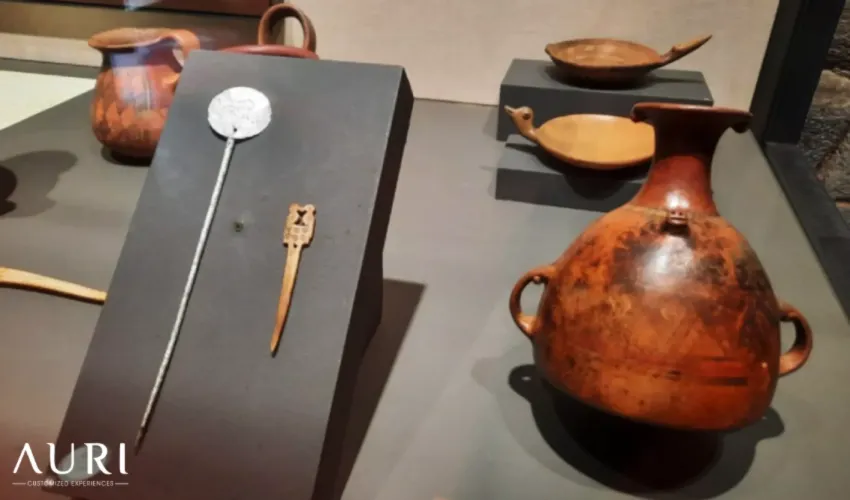
Casa concha museum – pieces and artifacts
8.- Admission and Schedule
For those eager to explore this historical treasure trove, admission fees vary:
- Adult foreigners: 20 Peruvian soles (approximately 6 US dollars)
- Adult Peruvians: 10 Peruvian soles (approximately 3 US dollars)
- Foreign students: 10 Peruvian soles (approximately 3 US dollars)
- Peruvian students: 5 Peruvian soles (approximately 1.50 US dollars)
- Citizens of Cusco: Free admission
The museum welcomes visitors Monday to Saturday from 9 a.m. to 5 p.m. and remains closed on Sundays.
9.- How to Reach the Museum
Navigating to the Machu Picchu Museum of Casa Concha is a breeze. A short 5-minute walk from Cusco’s Main Square, the museum is situated on Calle Santa Catalina Ancha Nº320. Travelers can embark on this enjoyable stroll by setting off from the Main Square, heading towards Calle Sta. Catalina Angosta, and then proceeding to Calle Sta. Catalina Ancha.
10.- Recommendations for Exploring the Casa Concha Museum
- As you approach the colonial mansion housing the Machu Picchu Museum of Casa Concha, you’ll find official bilingual guides available for hire at the entrance. These knowledgeable locals can greatly enhance your visit by providing further historical and cultural context about the artifacts and the intriguing history behind this world-famous collection.
- Once inside, remember that while the urge to photograph and touch these invaluable relics first-hand may be strong, these activities are prohibited within the museum to preserve these irreplaceable pieces. However, helpful museum staff are on hand to answer any pressing questions about the exhibits.
- To further expand your exploration of Cusco’s rich and layered history beyond the Inca period, consider visiting some of the city’s other top museums. The Coricancha Museum located at the original Temple of the Sun offers additional context on Inca cosmology and spirituality. The Inca Museum contains one of the most significant collections of metalwork and colonial religious art. The Pre-Columbian Art Museum houses stunning artifacts spanning 4,000 years of Peruvian history. And the Cusco Regional Historical Museum focuses on local folklore and customs.
11.- Is Casa Concha museum worth it?
Among the most captivating features of Museo Casa Concha is its unique collection of relics originating from Machu Picchu that is currently on display. Any upcoming or recent visit to this iconic site will be significantly enhanced by the museum’s skillful preservation and comprehensive contextual information. Providing a tangible connection with the archaeological wonder, items such as ceramics, metal objects, and khipus—each of which conveys the essence of daily life and ceremonial practices—provide a conduit for deeper immersion. Those inclined to visual learning will benefit greatly from these artifacts, as they vividly bridge the gap between the past and the present
Compared to the grander Museo Inka, Museo Casa Concha stands out for its content as well as its scaled-down ambiance. This distinction can be deemed advantageous, as it ensures a meaningful encounter with Cusco’s museum scene without necessitating an extensive time commitment.
If you are interested in archaeological discoveries or a deeper understanding of the Inca civilization, there are several alternative museums available for your exploration. Among them, the Museo Larco in Lima and the Museo Inka in Cusco were noteworthy. In addition, it is important to emphasize that Museo Machu Picchu Casa Concha is independent of the boleto turistico scheme. Guests must purchase their own tickets in order to gain access to the museum.
There is no doubt that Museo Casa Concha is the best place to go if you can witness relics that are uniquely associated with Machu Picchu’s legacy, and if you would like to explore the museum’s nuanced approach to Bingham’s collection, especially in light of the controversy that surrounds it.
Immerse yourself in the enigmatic allure of Peru, a land steeped in legend and history. At the heart of this captivating tapestry lies the majestic Machu Picchu, a sentinel of ancient mysteries that have endured through centuries. Nestled within the embrace of a splendid colonial mansion, the Casa Concha Museum unveils an unparalleled trove of artifacts hailing from the hidden chambers of Machu Picchu – a treasury of ceremonial vessels, mesmerizing jewelry, and cryptic carvings.
Here at Auri Peru, we extend an irresistible invitation to unearth the history of Machu Picchu in person, through the doors of Casa Concha, we are thrilled to share its wonders with you. Join us in embarking on a voyage through Cusco and Peru, where the secrets of Incan civilization come alive.
